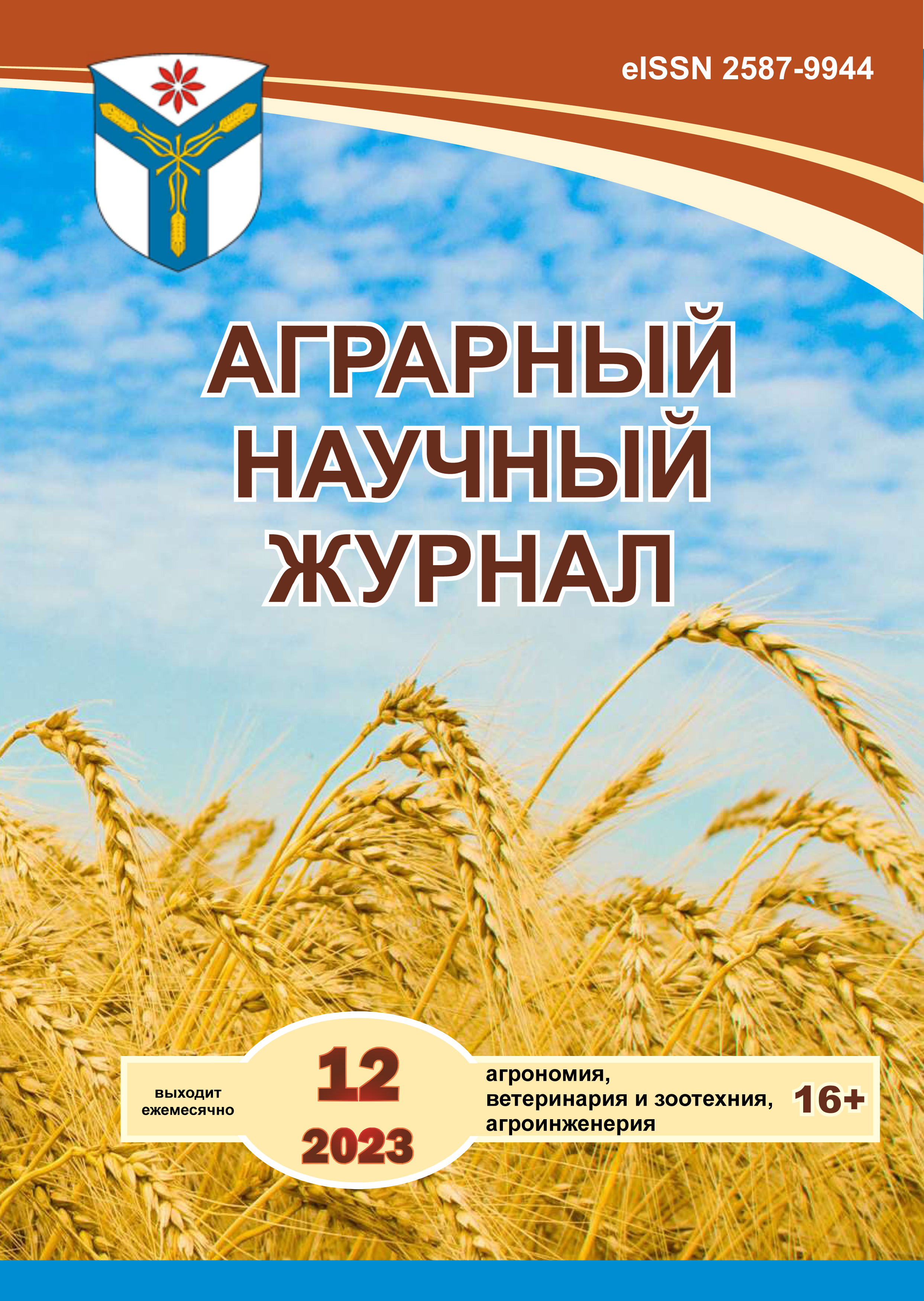Features of the formation of morpho-biological signs of soybeans depending on the growing conditions
DOI:
https://doi.org/10.28983/asj.y2023i12pp10-17Keywords:
soybean, variety samples, early ripening, yield, grain quality, different growing conditionsAbstract
The results of evaluation of the collection of more than 400 soybean samples according to morphological and economically valuable features in the conditions of Belarus and the Central Black Earth Region of the Russian Federation are presented. Experimental research methods were used: field and laboratory. By the duration of the growing season (from 91 to 140 days), the samples are distributed among 4 ripeness groups. More than 50 % of samples are of practical interest for the selection of soybeans for precocity, it is advisable to use them in crosses to obtain new varieties. According to morphological characteristics, samples stable in height of Adess and Memory of Fadeev were identified, in terms of the percentage of attachment of beans below 15 cm, a Kitross sample should be used in selection for manufacturability. In terms of yield stability, the best are Vasilisa, Avanta, Adessa, Kasatka, Lyuba, and Kitross, it is advisable to involve them in hybridization to increase yield. In terms of protein content in the grain, the best were Viscount, Killer Whale, Kitross, Avanta, Adessa and Luba. The Vasilisa variety admitted to use by the State Commission for Testing and Protection of Breeding Achievements for Use in the 5th Region (CDC) is advisable to grow in production to increase the variety of soybean varieties.
Downloads
References
Грязнов А. А. Ячмень голозерный в условиях неустойчивого увлажнения. Куртамыш, 2014. 300 с.
Доспехов Б. А. Методика полевого опыта (с основами статистической обработки результатов исследований): учебник для студентов высших учебных заведений по агрон. специальностям. М.: Альянс, 2011. 352 с.
Корсаков Н.И., Макашева Р.Х., Адамова О.П. Методика изучения коллекции зернобобовых культур. Л., 1968. 175 с.
Международный классификатор СЭВ рода GlycineWilld. Л., 1990. 48 с.
Методика Государственного сортоиспытания сельскохозяйственных культур / Вып. 3; под ред. М. А. Федина. М., 1983. 184 с.
Мякушко Ю.П., Дудка Н.З. Селекция сои на повышение урожайности // НТБ ВНИИМК. 1984 а. Вып. 86. С. 3–6
Официальный сайт ФГБНУ «Госсорткомиссия». URL: gossortrf.ru.
Методы создания сортов сои северного экотипа / Г. С. Посыпанов [и др.] // Сельскохозяйственная биология. 2006. № 5. С. 29–33.
Шигидин А.А., Ващенко Т.Г. Морфо-биологические особенности сои при селекции в Центральном Черноземье // Труды Кубанского государственного аграрного университета. 2022. Вып. 4 (97). С. 132–137.
Шигидин А.А., Ващенко Т.Г. Экологическое испытание образов сои // Научный вестник Луганского государственного аграрного университета. 2021. № 4 (13). С. 73–78.
Downloads
Published
Issue
Section
License
Copyright (c) 2023 The Agrarian Scientific Journal

This work is licensed under a Creative Commons Attribution-NonCommercial-NoDerivatives 4.0 International License.








